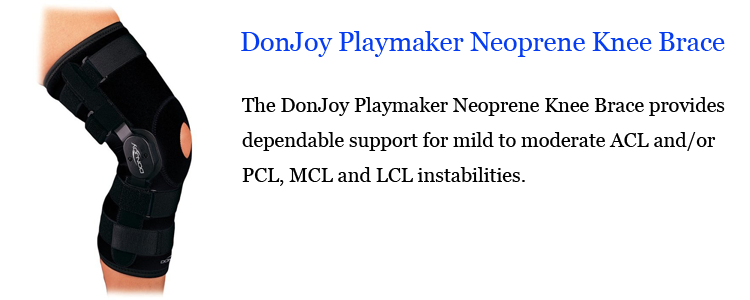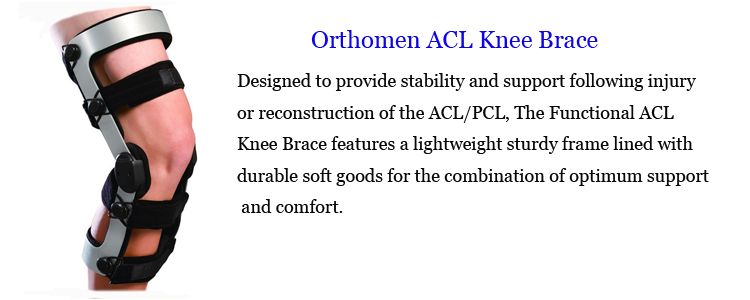How Do Knee Braces Work?

Knee braces support the knee's ligaments by controlling certain movements and providing protection against abnormal or excessive knee movement on operative and non-operative injured knees. Knee braces come in various shapes and sizes and serve many functions. You can find basic braces at pharmacies and sporting good stores or get high-end versions custom made to fit your knee. Knee braces fall into one of the three categories: prophylactic, functional and rehabilitative.
Neoprene Sleeve

The basic knee brace is the neoprene sleeve. The neoprene does very little actual support of the knee; its primary purpose is to retain warmth around the knee, which helps reduce pain from chronic inflammation injuries. The neoprene sleeve also works as a compression sleeve to prevent and reduce joint effusion, or knee swelling. These braces are available at most sporting goods or health supply stores.
Patellofemoral Brace

Many injuries occur at the patellofemoral joint. These include chondromalacia, quadriceps tendonitis, patella subluxation and patella dislocations. These injuries are caused when the patella, or knee cap, tracks inward and rubs against the surface lining of the femoral groove. The patellofemoral brace is designed to allow for proper patellar tracking during knee flexion and extension. The brace has a doughnut-shaped hole that goes around the knee cap and has a raised ridge. The brace is designed to push the knee cap outward during knee motion, allowing the joint to track properly.
Hinge Brace

The purpose of the hinge brace is to protect against excessive valgus or varus force--excessive left or right motion, which can cause sprains of either of the side ligaments of the knee. The hinge brace has rigid bars that are aligned inside and/or outside the knee which act as secondary stabilizers. Some versions have a locking mechanism on the brace that will prevent the knee from going to extreme bent or straight positions. Hinge braces found at health supply stores are unreliable and should be ordered from a physician.
ACL Brace
The anterior cruciate ligament prevents the lower leg from sliding forward on the femur and also extreme rotation at the knee. Most ACL injuries are non-contact and are caused from planting the feet and then twisting. ACL braces are designed to prevent excessive rotation and forward translation of the tibia. Most often these braces are used on post-surgical athletes. They cannot be purchased from a store and must be custom ordered by a physician because of brace intricacies and fit. Measurements of the patient's leg length and girth must be done to ensure proper fit.
Knee Immobilizer

Knee immobilizers are used immediately after ligamentous injury and surgery. The immobilizer extends from the upper thigh down to the calf. It has a contoured plate behind the knee that goes from the thigh to the calf. It also has plates on each side of the knee to protect the collateral ligaments.
- Choosing a selection results in a full page refresh.


3 comments
Charles kibui kigo
Pls give me the prices of knee braces which are shorter(which can be worn under the trousers
Charles kibui kigo
Pls give me the prices of knee braces which are shorter(which can be worn under the trousers
Hannah Craig
I have no ACL at all in one knee. I have recently become very active. I bought this brace to buy me some time until I can get around to getting a new custom brace. Let’s just say, I am no longer in any hurry.
This brace fits like a glove. It allows my knee to bend the way it should and keeps it from bending in ways it should not. My leg feels secure. The brace does not slip. It is also very comfortable and not restrictive. There are also no straps behind my knee to irritate the skin behind the joint.